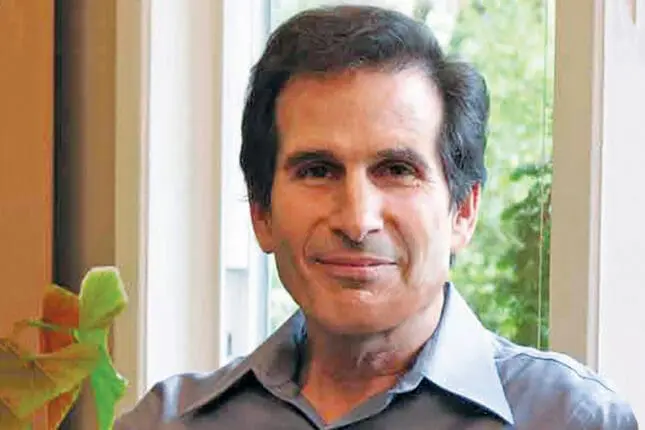Is it possible to treat trauma without talking about it—or even asking clients to engage with their traumatic memory? According to therapist Philip Manfield, developer of the Flash Technique and author of EMDR Up Close: Subtleties of Trauma Processing, the answer is a resounding yes.
For the better part of Manfield’s therapy career, he’d focused on providing trauma treatment through EMDR, yet after years of practicing under the tutelage of Francine Shapiro, EMDR’s originator, he realized that a technique used merely to prepare clients for EMDR treatment was quite effective at relieving the pain from traumatic memories. Not only that, but it didn’t require his clients to immerse themselves in their traumatic memories.
Now, seven research studies have validated this technique, which relies on the client’s own positive experiences and memories as a healing agent. The studies suggest it has a similar level of effectiveness as the bilateral stimulation used in EMDR eye movements, but clients prefer it because it’s not emotionally painful.
As more mental health institutes and training programs teach the technique, it’s gaining a foothold in the field. Here, Manfield talks about its origins and his hopes for its future.
– – – –
Ryan Howes: Sometimes being able to champion novel treatment possibilities in the therapy field stems from having a bit of an outsider’s background. Let’s begin with your unique path to the profession. You studied math at Columbia and Berkeley. Why did you become a therapist?
Philip Manfield: I got involved in my own personal therapy, found it to be life changing, and arrived at a crossroads: either I do my dissertation and teach math, or I make a difference in people’s lives. My own life was turned around by therapy, and I thought if I could have that kind of effect on other people, I should jump at the opportunity.
Early in my career, after I’d done some training at an analytic institute and had a book on personality disorders published, I saw an advertisement in the local newspaper that Francine Shapiro was doing a training nearby on some new treatment for trauma. I signed up for it the next day, one thing led to another, and I joined her organization and began doing EMDR and facilitating trainings.
RH: How, amid all this, did the Flash Technique come about?
Manfield: A woman named Krystyna Kinowski from Victoria, Canada, called me to tell me that she’d developed something she called Put Your Best Foot Forward, an elaborate technique that was being used in the preparation phase of EMDR. The thing is, she’d noticed that independent of the work that followed, this technique on its own seemed to help people improve and reduce the intensity of disturbing memories.
In the EMDR world, you can’t claim anything is going to resolve traumatic disturbance other than EMDR, so the community hadn’t permitted her to teach her technique at EMDR venues. I, however, thought it was brilliant because the technique was down-to-earth and fun to do, and it got good results. I was most impressed with the part of her process that she called paired titration, which involves going back and forth in your mind between something positive and some sliver of a trauma memory. Gradually, she’d increase the intensity during the back-and-forth process and have clients go further into the trauma. It was graduated exposure, really.
I liked this because I’d found that when you tried to process big traumas with EMDR, people often got flooded and dissociated. It was too painful. They’d sometimes say they wanted to stop. But she was pairing the positive with the negative, and substantially reducing the amount of exposure to the negative—and this titration seemed to be an answer to those clinical problems. You could tackle a deeply disturbing memory by starting from a positive image, then just momentarily going to a piece of the trauma, and then back to the positive image. Gradually, you could linger for more than a moment and take on a bigger slice of the trauma. It worked to process the trauma. It took quite a while, but it worked.
For example, I had a client who’d been raped, and thinking about it, of course, was overwhelmingly disturbing. She’d get flooded and dissociate. It wasn’t possible to move through the standard phases of EMDR, so I tried paired titration. She first chose a positive image of being on the beach with her best friend. She was able to picture this vividly and experienced a sense of calm while engaged with that image. I then asked her to think of a peripheral aspect of her trauma for a moment, namely the neighborhood where the rape occurred, then immediately return to think of the beach scene. Her disturbance level shot up a bit, but we repeated this minimal exposure until she was easily able to tolerate it for a few minutes.
Then I had her think of a less peripheral portion of her rape trauma: the image of the front door of the house in which the assault occurred. Understandably, her distress level increased again, but then it went back down with repeated exposure and return to the positive beach scene. We alternated back and forth between the beach scene and more and more central aspects of the assault memory, finally getting to the full experience. In other words, the exposure to the trauma was gradually increased until eventually she was able to fully process the entire trauma with the EMDR protocol without becoming overwhelmed.
RH: It sounds like systematic desensitization with a supportive anchor—easing clients in and then giving them something positive to hold on to as they’re delving deeper.
Manfield: Exactly. This was a technique that allowed me to slice and dice the trauma as finely as I wanted. So eventually I could find a slice fine enough that the client could tolerate it. The Flash Technique grew out of this paired-titration technique.
RH: As you started practicing and teaching Flash Technique, why weren’t you banned from EMDR circles?
Manfield: I focused on its use during the preparation phase of EMDR, which provides a lot of latitude for innovation. I was doing it to make the EMDR process more tolerable to clients. And I wasn’t claiming that it competed with EMDR. Any technique done during the preparation phase of EMDR is considered consistent with the definition of EMDR.
RH: How did paired titration lead to the Flash Technique?
Manfield: I was preparing to do a presentation at the EMDR conference on paired titration, and I started asking myself how brief the client’s exposure in therapy to the trauma could be. I started experimenting with exposure so brief that the person didn’t feel any disturbance at all, and I found the bigger the processing effect, the less upset the client appeared to be. It was a significant and surprising difference.
I told some fellow EMDR clinicians about it, and they got similar results. Soon after, we published a paper on it.
RH: Briefly, can you walk me through the Flash Technique?
Manfield: We have the client identify a trauma they want to work on and then instruct them to “touch it lightly” while tapping their thighs alternately and periodically rapidly blinking their eyes when asked to—that is, they don’t picture it or think about it in any level of depth. As therapists know, clients can relate to their trauma memories without going into them, in a kind of detached manner; that’s the level of engagement we use when setting up the Flash Technique. The client doesn’t need to describe the experience to the therapist, and in fact, we often never name it at all and instead refer to it as the target memory.
Once the target memory is identified, the client is instructed to set it aside. We then have them focus their attention on identifying and engaging with a positive image, activity, or memory, all the while self-administering bilateral stimulation via tapping their hands in their lap, alternating left and right. Periodically, we ask the client to blink rapidly three to five times. We may keep them centered on the positive scene by talking with them about it, and the session can feel quite fun! From time to time, we have them check on the target in that same detached manner, specifically to see if anything has changed. Typically, the target seems less distressing, with many clients saying it seems further away or it’s difficult for them to access at all. We’ve seen some trauma memories process completely with the Flash Technique, whereas others become much less distressing, to the point that typical trauma processing therapies, like EMDR, can easily be tolerated.
RH: I’m curious about what the actual mechanism is.
Manfield: We’re convinced that the mechanism is explained by the research of psychologist Paul Siegel, which shows that very brief exposure to something you’re afraid of can reduce your fear of it. Siegel exposed two groups of people who had spider phobias to the image of a spider by flashing it on a screen. For one group, the spider image was discernable; for the other group, the spider image was flashed too quickly to consciously recognize. It turned out that people who didn’t know they’d seen a spider had a significantly stronger exposure effect and reduction in their phobia than the people who knew they’d seen the spider. Why? If you expose someone to a trauma and get them thinking about it, they’re going to have a fight-or-flight response. And when they’re scared, the part of the brain that processes trauma becomes less active and doesn’t process as well. With Flash, we keep the client out of fight or flight, so that the subconscious exposure can effectively be processed.
RH: Where does the flash come in?
Manfield: We’re doing the flash by having them blink three, four, or five times without intentionally thinking of the trauma. We believe this causes the brain to refocus on the trauma without conscious activation. We’re at the point in the research now where we’re turning our attention to the mechanisms, and I think we’ll see that the blinking reconnects working memory to the trauma, but in a way that doesn’t stimulate a fight-or-flight response. In fact, the clients don’t experience any disturbance at all.
Now that we have ample evidence that the technique works, we’ll be focusing on dismantling studies to figure out which are the essential components and whether there are ways to make the technique even more effective and efficient.
RH: What about in the case of multiple traumas, where it’s not just a single memory to be processed?
Manfield: We can actually process multiple targets at one time. This isn’t something we’ve talked much about, but we recently had our first international Flash conference, and one presenter from Turkey said he does five memories at a time.
RH: I don’t even think I could remember five things at a time, let alone process them!
Manfield: You don’t have to remember them all at once; you just have to decide what you’re going to work on. Remember that, with Flash, you won’t be holding those memories in conscious awareness. Simultaneous processing works best, as with all trauma treatment, when the target memories are related in some way. For example, a client I worked with who’d served as an EMT and had many highly disturbing memories of responding to accident scenes was able to process the five worst simultaneously in one session using his positive anchor of the best vacation he’d ever taken. All the traumatic scenes went to a zero—that is, he gave a rating of 0 of out 10 on a subjective scale of distress. The next session, when he checked in on those memories lightly, they were still zero. In every study that’s done a follow-up, client progress has held, even a year and a half later.
RH: Skeptics might say that this is based on suggestibility, and the client is trying to please the clinician.
Manfield: That’s a reasonable objection. But in a published study we did last year of using Flash with healthcare providers who’d been traumatized trying to help COVID-19 patients, we got an effect size you almost never see (Hedges’s g = 3.02). You don’t get effect sizes like that when people are trying to please a therapist.
RH: What’s next for the Flash Technique?
Manfield: We want to move outside the EMDR world. Now that Flash is evidence based, it’s reasonable to suggest that people who are doing exposure and CBT and all kinds of trauma treatments can incorporate this technique to make their work more efficient. For people doing CBT and talking with traumatized people using a logical approach, we believe starting with Flash would reduce the emotional disturbance, making the logical approach more rapid and effective.
RH: Given your background, is there any chance you’re going to introduce Flash Technique to psychoanalysis?
Manfield: No. Modern psychoanalysis is about developing a relationship between the analyst and the client; it’s a whole different process.
RH: The Flash Technique doesn’t utilize the relationship between the therapist and client? We’re often told that’s the most powerful agent of change.
Manfield: In a recent study, which hasn’t been published yet, we said to the researchers, “We’re doing these webinars with 500 people to help them process disturbing memories. . . . We don’t talk to them, and they don’t talk to us. They just follow our instructions, and then they get a good result. So does a therapist even have to be present at all? Why not take a recording of us and show it to people?” And that’s what these researchers did.
They did a careful study using recordings of what we’d say in the webinar when we put people through the Flash process. They had people watch the recording without any therapist present, and they still got extraordinary reductions in disturbance that remained stable over 30 days.
RH: Interesting. I’d guess you’re not trying to work therapists out of a job, right?
Manfield: Right. The technique isn’t a replacement for therapy, but it does effectively reduce the intensity of trauma memories.
Ryan Howes
Ryan Howes, Ph.D., ABPP is a Pasadena, California-based psychologist, musician, and author of the “Mental Health Journal for Men.” Learn more at ryanhowes.net.













